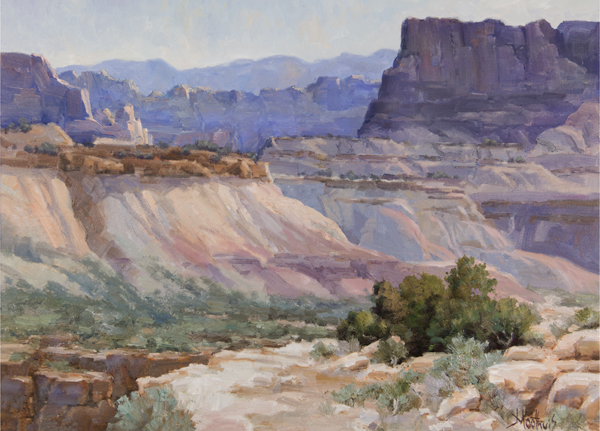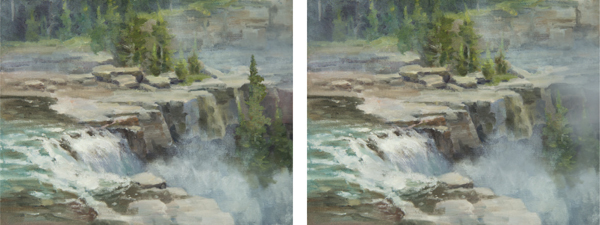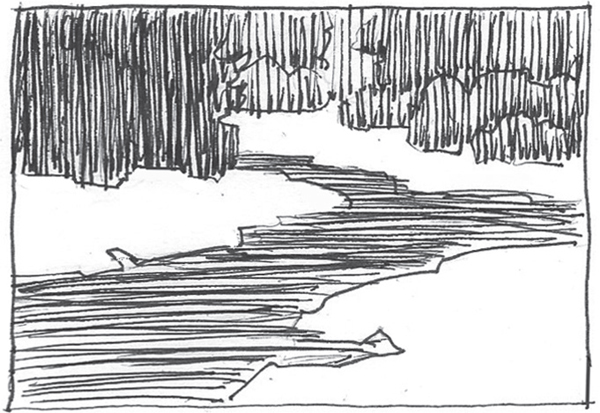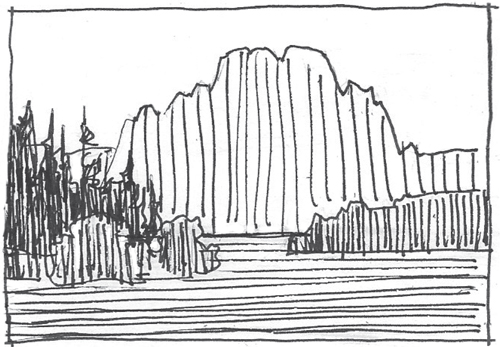

The bales and the tall grass are organized in a way that they lead the eye to the background.

The dirt road had two parallel lines. I offset one of them by overlapping it with the sage brushes. The grass against the dirt road forms a melodic line. The wild flowers are designed to grab the attention and subtly take the viewer to the distant cabin.

The logs are cleverly placed like toothpicks to help the viewer make the transition from the foreground to the mountain range. The protruding branches on the logs keep the eye from running over a straight line.

Occasionally you will encounter reference photos in which the scene in its natural state does not provide a lead-in. Rather the eye will be rushed from side to side, and the viewer will feel compelled to exit the painting. This eye movement is inevitable when shorelines are placed in a certain way. In this painting, I had to create a melodic line with the shoreline to slow down the eye. I also applied artistic license and added waves to form the visual path from the foreground. The highlights on these waves form an interrupted line where the viewer connects the dots.

In Western culture, we read from left to right. You will find that placing the visual movement from the left to right in most cases is preferable than the other way around. This painting has several melodic lines that the viewer will read in a pleasing way.
Flip your reference in a mirror before you draw it on the canvas.
You may get a better feel for it. Which version do you prefer from these two?


If copied as is, the viewer will follow the contour of the cliff all the way to the right edge of the composition and go right out of the painting. It is better not to allow the viewer to exit on the side unless you provide a way back in near that exit.

This issue can be solved in two ways: Place fog to make the line and the area ambiguous, or put a “stop sign” before the edge. In this case, the protruding evergreen stops the line from inviting viewers to exit.
It is a common practice for artists to allow the bank of a river to exit at one of the sides as long as there is a reentry point an inch or so from that exit. The eye will make the connection at the short distance. This anchors the shape nicely and helps to avoid the feeling that the river is being fitted into the rectangle like socks in a drawer.

When one part of the body of water originates from the side and the other from the bottom, it will give the impression it is a wider body of water such as a river. Make sure the two measurements from the corners are not the same.

When both sides of a body of water originate from the bottom, it will give the impression it is a narrow body of water, such as a stream.

When both sides of the body of water come out from opposite sides, it will convey the impression that it is a lake or an ocean.